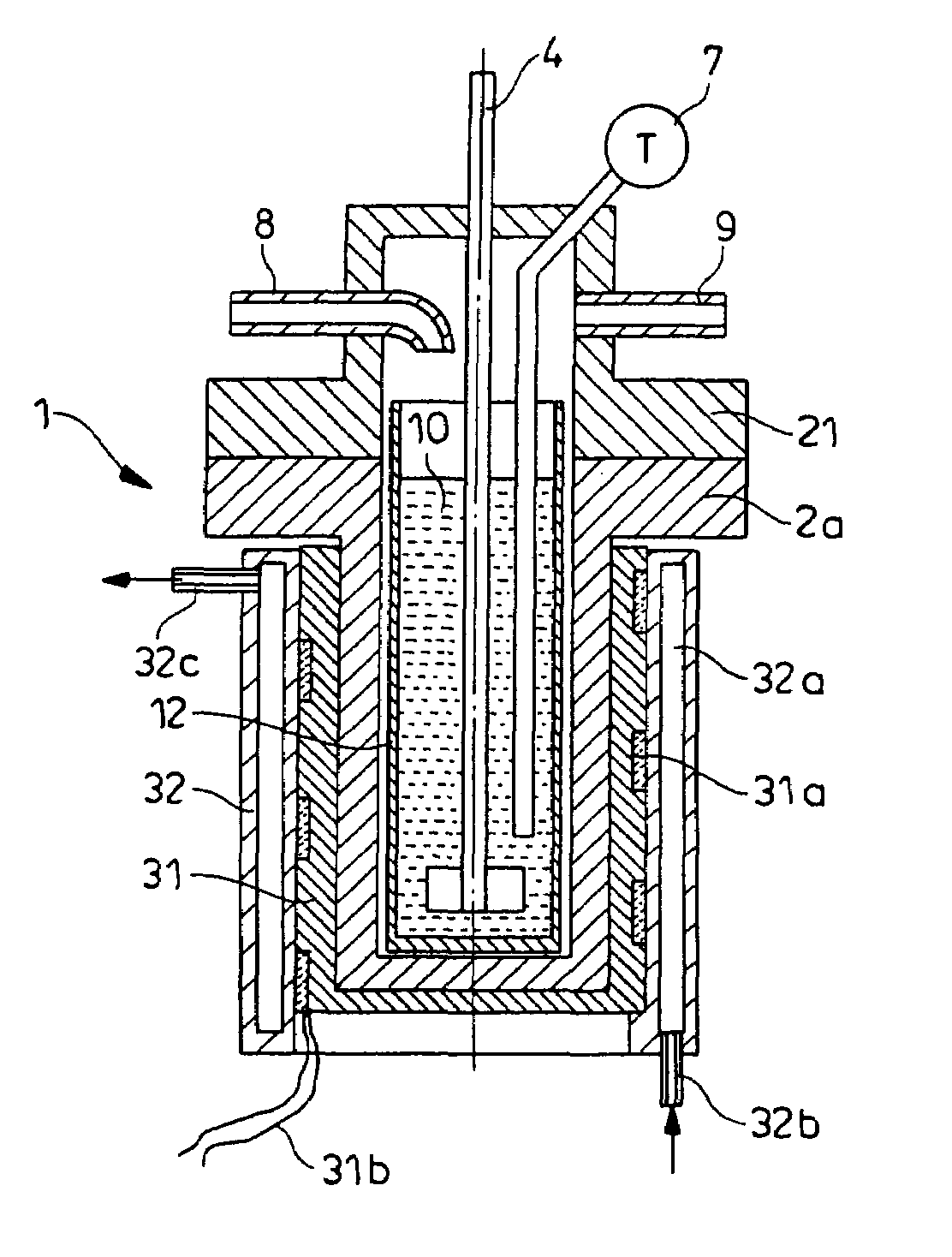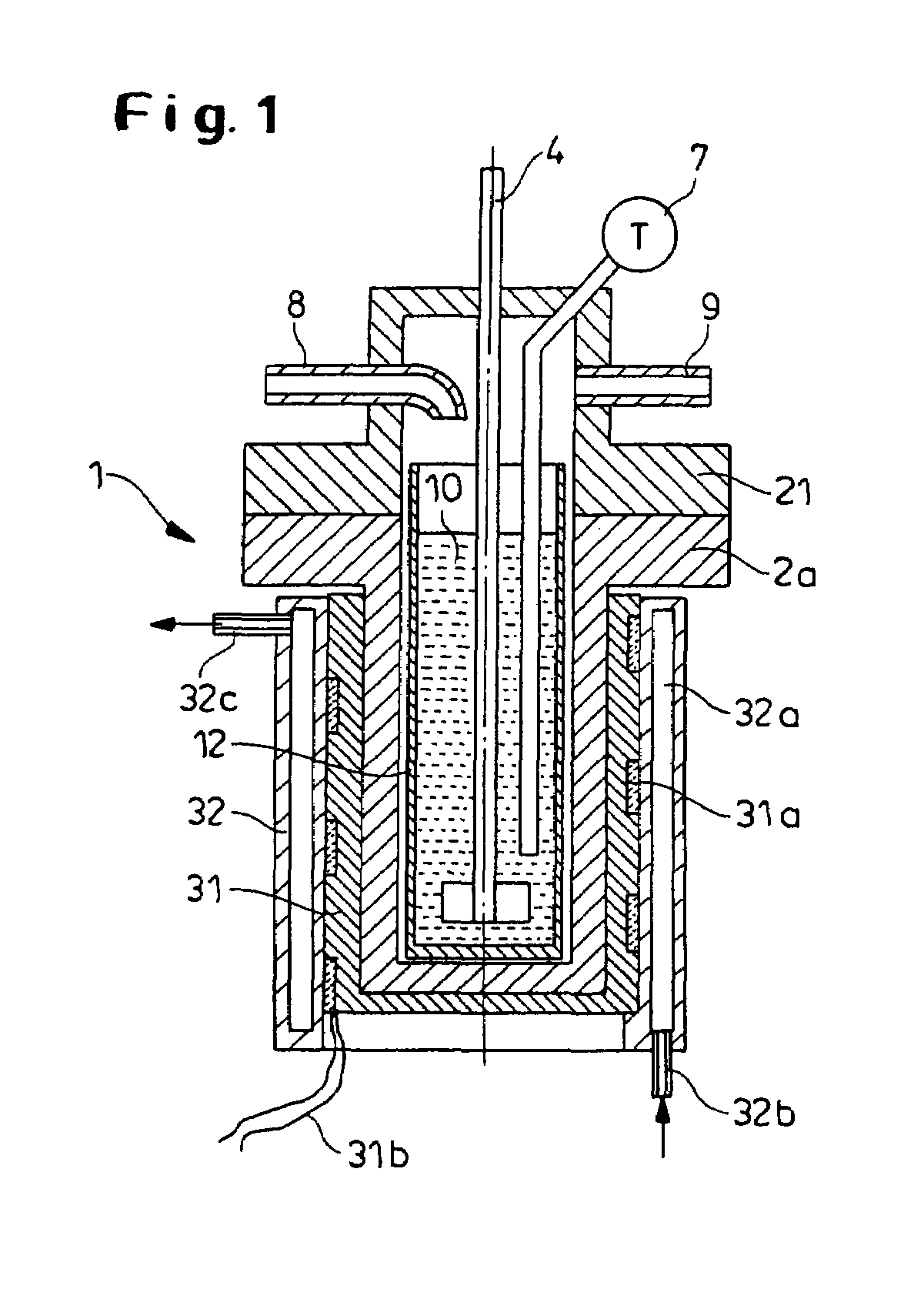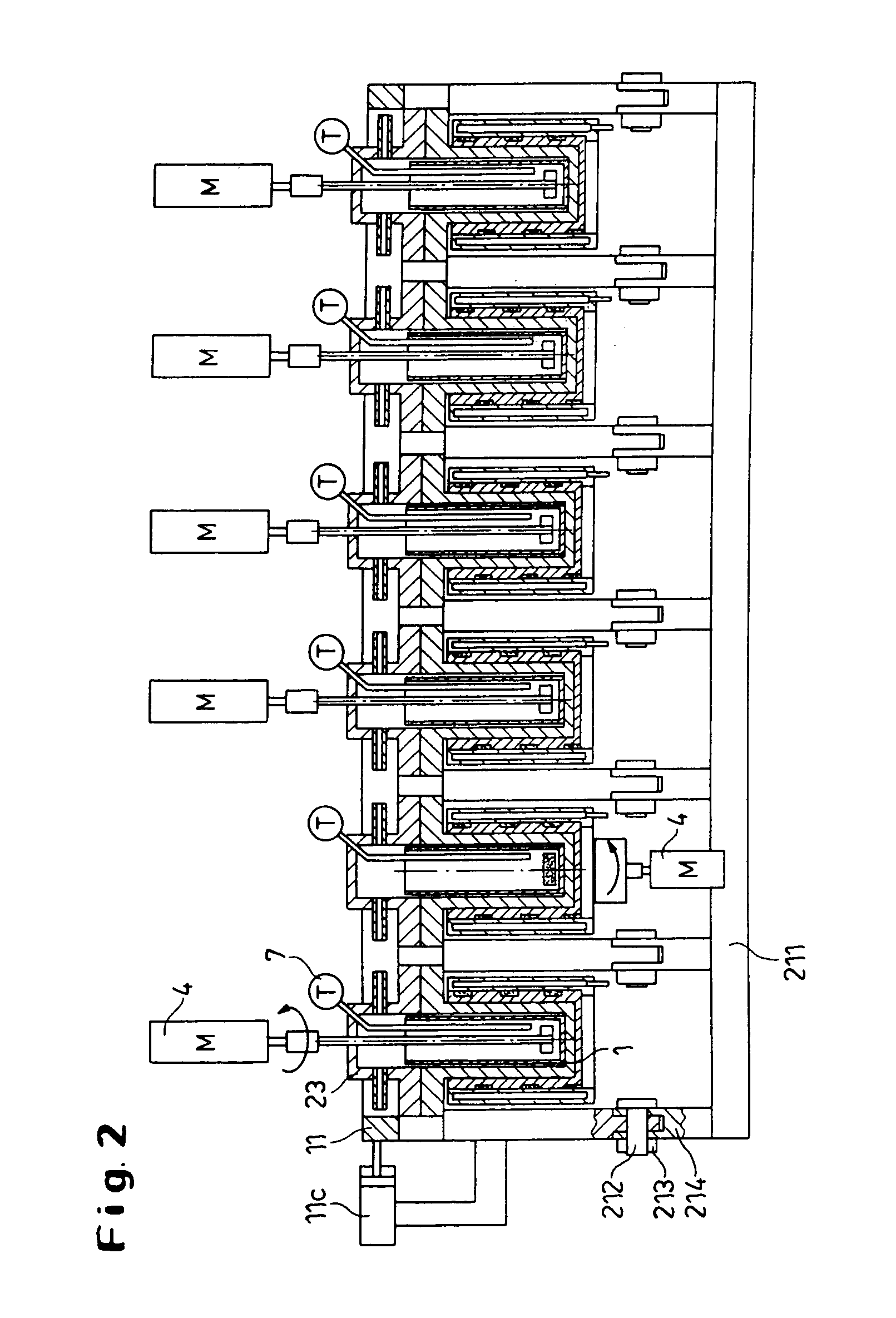Device and method for carrying out experiments in parallel
a technology of parallel operation and device, which is applied in the field of parallel device and method, can solve the problems of inability to achieve temperature above 350° c. for individual vessels operated in parallel, the requirements of carrying out experiments can be substantially more complex, and the temperature of the test tube is not provided individually, so as to achieve the effect of reducing the number of connection points, ensuring the safety of operation, and improving the overview
- Summary
- Abstract
- Description
- Claims
- Application Information
AI Technical Summary
Benefits of technology
Problems solved by technology
Method used
Image
Examples
examples
[0147]FIG. 7 illustrates an overview of the various parts of a test device and their interconnection, e.g. the modularly constructed individual reactor 1 with a lid module 22, the substance distributors 702, 702a with the plate valves 704 and the supply unit 701, which is embodied here as a simple assembly plate. In special applications, the supply unit 701 is designed with integrated main distribution channels as a flat substance distributor 80 (see FIG. 8) and is allocated to at least one individual reactor. Interface modules 714, 724 are furthermore provided in the form of a sensor and actuator circuit board, which is in turn attached to the monitoring unit 700 and a PC (not shown).
[0148]It can be seen from FIG. 7 that the individual reactor 1 contains a sample vessel (12 in FIG. 1) and a magnetic stirrer 4 is used, which is driven by a magnetic coupling with a motor (M). The modular structure of the individual reactor 1 is further described below with another stirrer device 4 in...
PUM
| Property | Measurement | Unit |
|---|---|---|
| temperature | aaaaa | aaaaa |
| pressure | aaaaa | aaaaa |
| temperatures | aaaaa | aaaaa |
Abstract
Description
Claims
Application Information
 Login to View More
Login to View More - R&D
- Intellectual Property
- Life Sciences
- Materials
- Tech Scout
- Unparalleled Data Quality
- Higher Quality Content
- 60% Fewer Hallucinations
Browse by: Latest US Patents, China's latest patents, Technical Efficacy Thesaurus, Application Domain, Technology Topic, Popular Technical Reports.
© 2025 PatSnap. All rights reserved.Legal|Privacy policy|Modern Slavery Act Transparency Statement|Sitemap|About US| Contact US: help@patsnap.com



